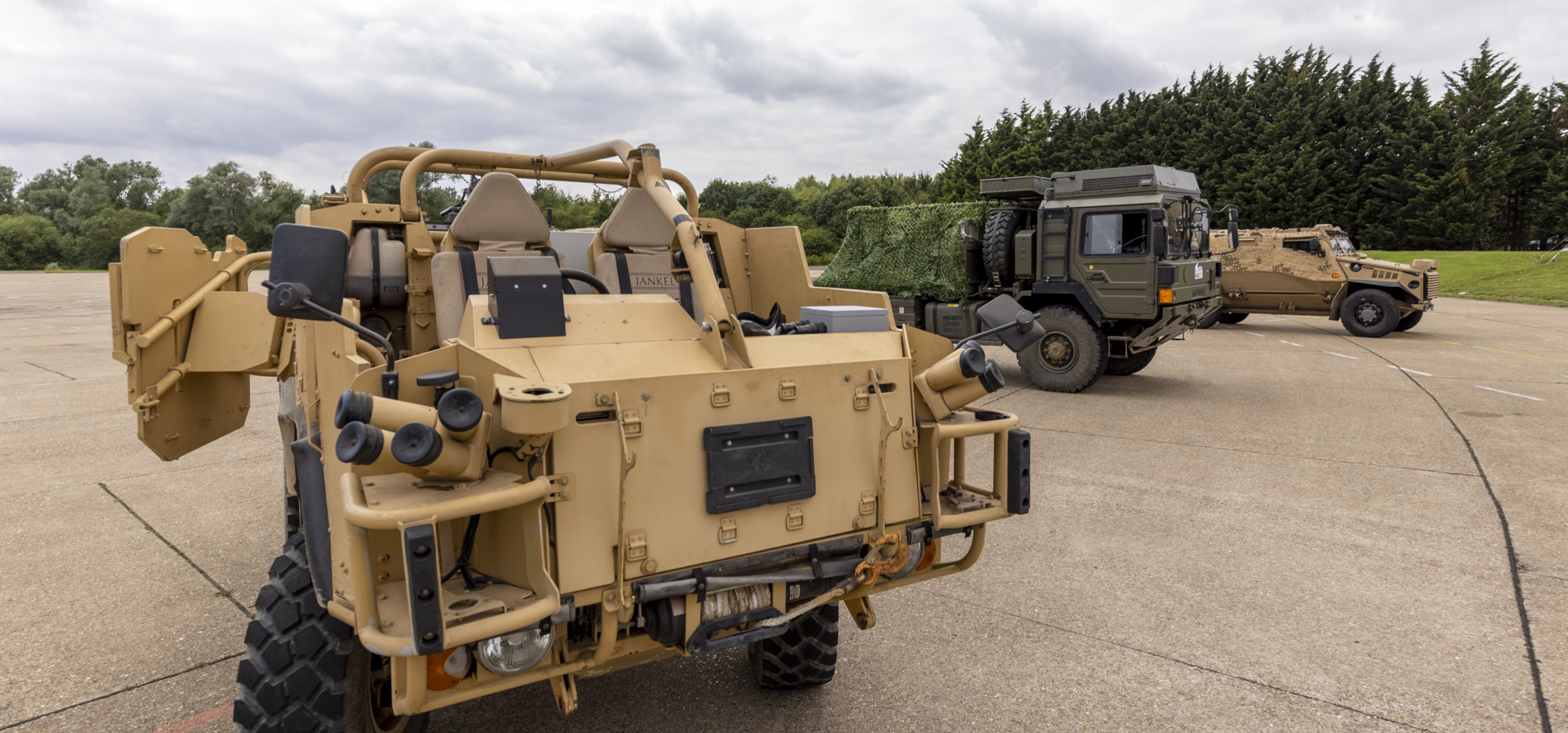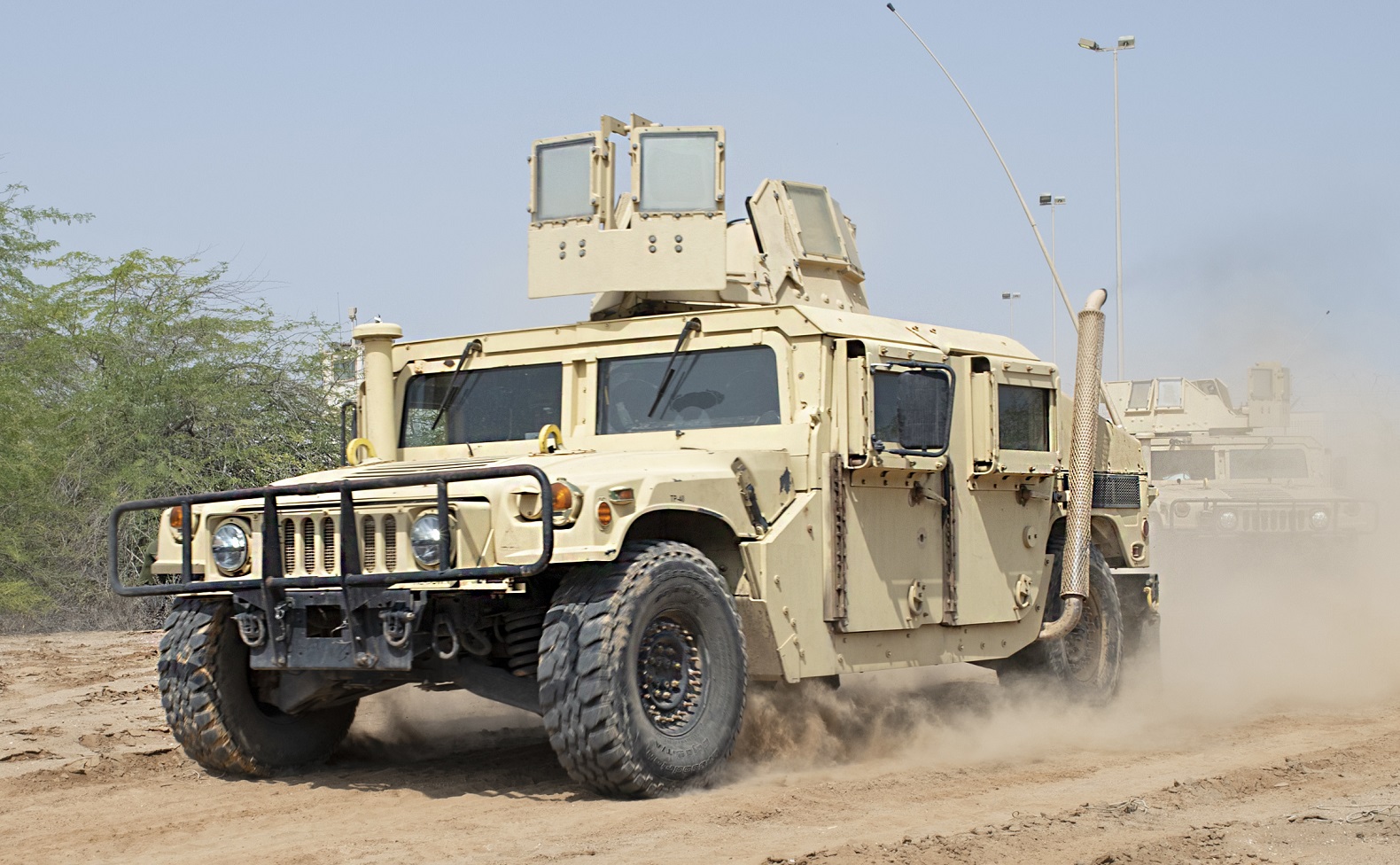Military Hybrid Vehicles - Mark Canzion, an associate professor at the Institute for Science and International Studies, said that the National Academies report examined the technology by 2035, and he believed that the use of electric vehicles throughout the battle was unlikely even during that time.
Michael Cadieux, director of the Army's Ground Vehicle Systems Center, said "I see some significant, and especially if you look at the year 2035 to come with the mix, ... the development organization. Say speech at the NDIA Tactical Wheeled Vehicle Summit, Land Vehicle Technology.
Military Hybrid Vehicles
 Source: www.army.mod.uk
Source: www.army.mod.uk
we are. So, if you have a lithium-ion battery, you should be able to carry it around without catching fire or exploding. "We are working with the needs of the people in the military," he said.
Oshkosh Is Testing Electric Fire Trucks
“There was a show. So, by giving our ideas [experts] ideas and they get from the business, they are able to help the needs. NDIA Tactical Wheeled Vehicle Discussion: The Army's plan to introduce and operate hybrid-electric vehicles in its land fleet is "successful" according to the timetable set out in the Army's air strategy and technology
science now, a senior military commander said on Tuesday. . But while research and development leaders acknowledge the benefits that hybrid or all-electric vehicles can provide, they are also clear about the gaps. Military experts at the meeting said that the battery power should be improved to power the vehicle without taking up significant space.
The military should prioritize the acquisition of series hybrid JLTVs to take advantage of the industry's development in electric and hybrid vehicles, while at the same time moving forward with the development of the hydrogen fuel cell-powered variant.
JLTV maker Oshkosh Defense has already developed a hybrid model that it says can improve fuel economy by 20 percent and eliminate the need for diesel engines. Committing to a large-scale purchase of hybrid JLTVs is an immediate step the Army can take to improve combat lethality and reduce reliance on gasoline.
 Source: www.army.mod.uk
Source: www.army.mod.uk
With the switch, the car can switch seamlessly from stealth-like silent mode to conventional mode and back. It has increased the power output to 115 kW, eliminating the need for multiple electric traction motors. The company's statement explains that the eJLTV can recharge its battery in just thirty minutes.
Oshkosh added that the eJLTV will reduce or eliminate "the need to pay for construction." Many believe that the need for housing payments is the most important issue for the use of large amounts of electricity in military facilities.
"We tend to store fuel for a very long time, and biofuels have a bit of a shelf life problem," he said. There is concern about the impact of biofuel degradation on storage and propulsion systems.
Caleb Larson is a national interest journalist and defense writer. A graduate of UCLA, he also holds a Master's degree in public policy and lives in Berlin. It covers the intersection of conflict, security, and technology with a focus on American foreign policy, European security, and the German society for printing and telecommunications.
wind Follow him on Twitter @calebmlarson. Award winners include: Coritech Services, Inc. of Royal Oak, Michigan; Czero, Inc. of Fort Collins, Colorado; Fermata Energy of Charlottesville, Virginia; PC Krause and Associates of West Lafayette, Indiana; Tritium Technologies, LLC of Torrance, California;
and Wright Electric in Albany, New York. Any electric vehicle could become part of the program, but that would be at the Postal Service's discretion. In some areas, such as rural communities, the use of EVs on postal routes may not be practical.
 Source: defence-blog.com
Source: defence-blog.com
But in the face of challenges, the military has made important strides towards hybrid electric technology. Its Emergency and Critical Service recently installed a hybrid technology Bradley Fighting Vehicle. The industry is also following the military's cues, as shown by Oshkosh Defense announcing that it has developed a hybrid-electric version of its Tactical Combat Vehicle.
Last year, BAE Systems, Inc. The Director of Braking told experts that the electric car is "a matter of time". According to the report, diesel is a suitable choice for military power and may be preferred over JP-8 in selected weather conditions during wartime.
"It's very easy in many places, and in some local situations it will be possible." The Department of Modern Warfare does not review articles for specific editorial standards, and does not endorse or approve published material.
Instead, the Department of Modern Warfare provides a forum for experts to share ideas and develop ideas. Comments are well reviewed before publication to ensure the social, professional and ethical content of the article. Logistically, they can be plugged into the host country's power grid for backup, reducing the military's burden.
The military can use vehicle-to-grid electric technology, allowing the electric battery to send electricity from the electric grid to power "support in camp." Finally, electric vehicles will reduce maintenance and support costs. Hydrogen fuel cells can be combined with batteries and generators.
The US military is experimenting with GM's ZH2 fuel cell-powered vehicle, which has many of the same benefits as an electric vehicle but runs on hydrogen instead of batteries. Fuel cell technology is evolving rapidly along with battery technology and is another option that the military should be looking at for tactical vehicles.
 Source: i.ytimg.com
Source: i.ytimg.com
The US Air Force is working on a prototype, non-tactical hydrogen-fueled vehicle in Hawaii. These improvements are signs that series hybrid powertrain designs are more future-proof than other automotive products, as their gasoline tanks and internal combustion engines can be installed
to run on other fuels (such as hydrogen) or interchangeably with other energy sources. can be taken. (like fuel cells). In a sweeping study, the National Academies of Sciences, Engineering and Medicine said the military should invest in a mix of energy sources, including jet propulsion, diesel and renewable diesel.
, but not all electric vehicles in the future battle. Still in use - at least until 2035. According to the report, "The latest design proposal suggests that such a device would weigh 40 tons, sending two 20-foot ISO containers in
combat, and have setup and cool-down times of three and two days, respectively. Oshkosh Defense, the company behind the US Army and Marine Corps' Joint Light Tactical Vehicle, recently unveiled electronic components of their Humvee replacement. The "eJLTV" that Oshkosh has been working on for several years will announce that it can work quietly. Another risk of electric vehicles should be known
about. All services, but especially the Army and Marine Corps, transport many tactical vehicles by ship, and some even by air. Battery fires add a new risk to business. However, these ships are already loaded with goods
more dangerous than gunpowder and jet fuel - so create safety procedures for car batteries as possible. build a chargeable, "purpose-built" hybrid tactical vehicle by 2035 and all-electric vehicles by 2050 The military's air strategy announced last month said the service
 Source: www.forces.net
Source: www.forces.net
intended for use in electric vehicles. Although the military has shown interest in electric vehicles, the "Government for the Future of the United States Military" study noted that all electric ground combat shooting platforms and trucks are not being used now or in the future.
The numbers are not on the side of the electric car, Szafranski said. For example, if the Army has six 300-kilowatt battery trucks and the military needs to refuel in 15 minutes - the time it takes to refuel a truck with JP-8 - it will need 7
-megawatt mobile charging system. "With a quiet clock and off-road use, we usually use twice the power of an equivalent commercial vehicle," he said in an interview with the National Guard. "That means that with today's battery technology, we won't be able to meet our needs or longevity."
National Security (National Security) provides licensed, non-commercial and technological resources for national defense and security. An excellent news source for security professionals in government and business, National Security offers insight and analysis on security, policy, business, science and technology.
. Special reports from media experts focus on defense budgets, military operations, doctrines and strategies. The electric vehicle is one of the GVSC's four most important components as a continuous technology, providing the military with both fuel savings and increased performance.
Cadieux said the service estimates fuel savings of more than 20% by introducing electronic devices to vehicles. National Security (National Security) provides licensed, non-commercial and technological resources for national defense and security. An excellent news source for security professionals in government and business, National Security offers insight and analysis on security, policy, business, science and technology.
 Source: o.aolcdn.com
Source: o.aolcdn.com
. Special reports from media experts focus on defense budgets, military operations, doctrines and strategies. A second type of electric car is the hybrid, such as the Toyota Prius. In parallel hybrids, the cars have an internal combustion engine and a battery that itself is connected to the wheels of the parallel machine.
All of these cars are more reliable than electric cars because they have both an electric motor and an internal electric motor. However, because of this, they have many ways and do not have the functionality of an electric car.
The batteries are usually too small to drive long distances and these cars can be considered as a hybrid car with a battery booster for high performance. "Although the U.S. Army has not requested an electric JLTV as part of the JLTV redesign, the eJLTV proves that Oshkosh Defense has the team and resources to develop a capable vehicle today.
," said Bryant. Named eJLTV, which stands for Electric Light Tactical Vehicle, it offers the U.S. Army and Marine Corps the same level of performance and safety as standard JLTVs, according to Oshkosh. The new car features a quieter drive, longer fuel economy and more power output.
Some observers have wondered whether nuclear power could provide the energy needed to power cars, the report noted. Such a way will give the energy is not good, the energy of the energy can not be in the next year, said Luginsland.
"Honestly, when I look at tactical wheeled vehicles, the [design] gaps are not as big ... as we see from the ground," said Cadieux. However, when it comes to other ships, there are more problems. "When we're talking about 30-plus-tonne trucks and tracks, the difference is huge," he said.
Walker D. Mills is a Marine Corps infantryman training to become an RPA pilot. He is a non-resident fellow at the Marine Corps University's Brute Krulak Center for Innovation and Future Warfare and a non-resident fellow at the Irregular Warfare Initiative.
He has a bachelor's degree in history from Brown University and a master's degree in international relations and modern warfare from King's College London.
military hybrid electric vehicles, ev military vehicles, electric military vehicles, tax incentives for hybrid cars, military electric vehicle programs, military ev, us military electric vehicles, arquus scarabee armored vehicle price